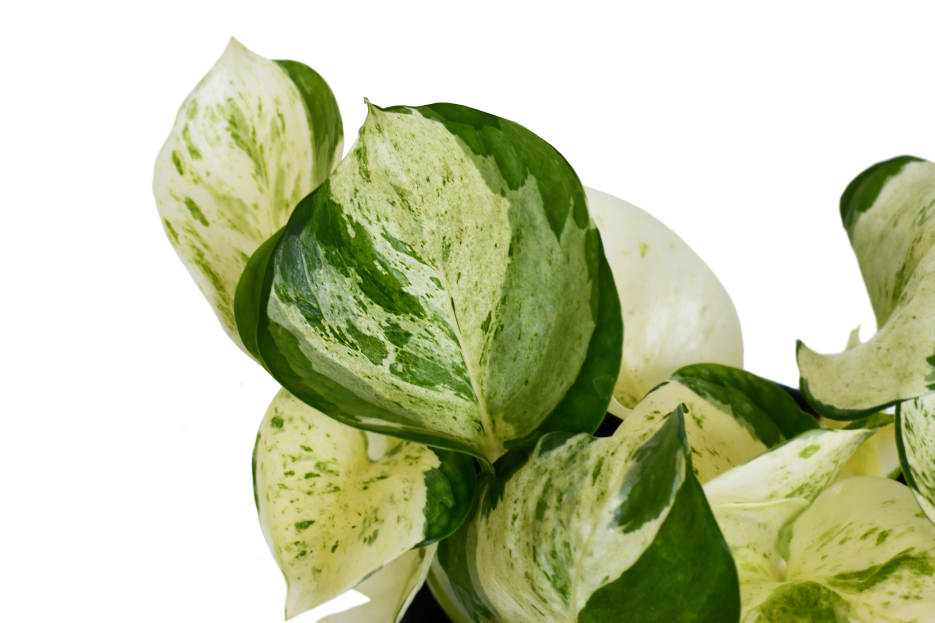
(Epipremnum aureum ‘Manjula’)
Pothos ‘Manjula’ is a show-stopping variety of pothos that brings an artistic flair to any indoor plant collection. With its heart-shaped leaves marbled in creamy white, silvery green, and soft lime, each leaf is uniquely patterned—no two are alike! Developed at the University of Florida, Manjula is a patented cultivar of Epipremnum aureum, known for its slow, elegant trailing growth and eye-catching variegation.
If you're looking for a plant that combines style and simplicity, Manjula pothos is a perfect match.
Pothos ‘Manjula’ thrives in bright, indirect light, which helps maintain its vivid variegation. Avoid direct sunlight, as it can scorch its leaves, especially the lighter-colored portions.
While it can survive in medium to low light, too little light may cause the variegation to fade and the plant to grow leggy. If your Manjula is losing its contrast, move it closer to a bright window with filtered light.
Water when the top 1 to 2 inches of soil feel dry. Like other pothos, Manjula prefers a moderate watering routine—not too wet, not too dry. Overwatering can lead to root rot, especially because the lighter variegated areas of the leaves can slow growth and reduce the plant's water needs slightly.
In winter, reduce watering frequency, allowing the soil to dry out a bit more between drinks.
Manjula pothos is not too fussy about humidity but does appreciate a bit of extra moisture in the air, especially in dry environments. Average household humidity is usually sufficient, but you can boost it by:
Ideal temperature range is 65–85°F (18–29°C). Avoid cold drafts, sudden temperature drops, and temps below 55°F (13°C).
Use a well-draining potting mix—a standard indoor houseplant mix works great. You can also create your own with:
Ensure your pot has drainage holes, and repot every 1–2 years or when roots become crowded. Manjula has a slower growth rate than other pothos, so it won’t need repotting as often.
Feed your plant every 4–6 weeks during the growing season (spring through summer) with a balanced, water-soluble fertilizer at half strength. Avoid over-fertilizing, which can lead to salt buildup and leaf tip burn on your plant.
Hold off on fertilizing in fall and winter when the plant's growth slows.
Prune Manjula to maintain a compact shape or encourage fuller growth. Simply trim just above a node with clean scissors—this will encourage new vines to branch out. Regularly remove any yellowing or damaged leaves to keep the plant healthy.
Manjula is easily propagated through stem cuttings:
You can also propagate directly into moist soil or sphagnum moss.
Unfortunately, like all pothos, Manjula is toxic to pets and humans if ingested due to calcium oxalate crystals. Keep your Manjula Pothos out of reach of curious pets and children.